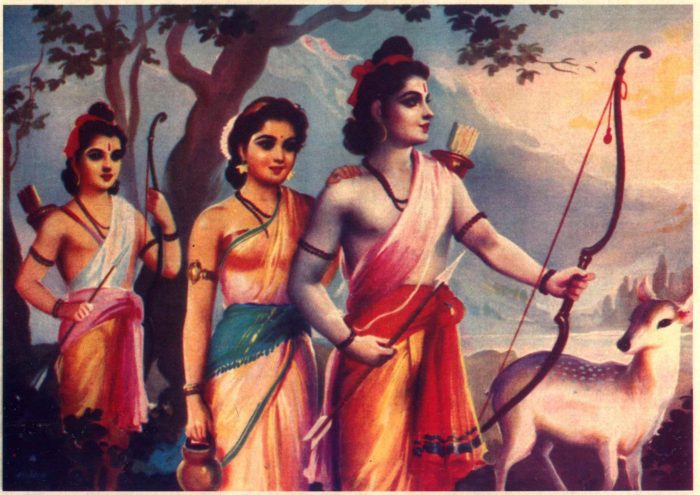Mythemes I
June 25, 2020 Category: History
Appendix:
The Vedic epic, “Rama-yan[a]” is an ideal case-study in trans-cultural resonance. It was originally composed by Valmiki in the 5th-century B.C. (ostensibly based on the “Mula Rama-yana” by Narada from even earlier). That was followed by the “Artha-shastra” by Kautilya (a.k.a. “Chankya”) in the 4th century B.C.
Bhavabhuti of Vidarbha then did a version dubbed the “Maha-Vira-Charita” [“Exploits of a Great Hero”] c. 800 A.D. Since then, there have been myriad versions:
- Vaishnava Hindu: the “Ram[a]-charit[a]-manas[a]”, “Kannassa Rama-yana[m]”, and Ezhuthachan’s popular “Adhyatma Rama-yana[m] Kilipattu” (composed in Malayalam)
- Shaiva Hindu: Kambar’s “Rama-vatara[m]” (a.k.a. “Kamba-Rama-yana[m]”) (composed in Tamil)
- Vedanta / Kannadiga Hindu: the “Kumudendu Rama-yana” and “Kumara-Valmiki Torave Rama-yana” (composed in Kannada)
- Ganga (Orissa): the “Dandi Rama-yan[a]” (a.k.a. “Jagamohan Rama-yan[a]”)
- Jain: the “Pauma-chariya[m]”
- Marathi: the “Bhavartha Rama-yan[a]”
- Kashmiri: the “Rama-vatara Charita”
- Bengal: the “Krittivasi Rama-yan[a]”
- Assamese: the “Katha Rama-yan[a]” (a.k.a. “Sapta-kanda Rama-yan[a]”)
- Nepalese: the “Bhanu-bhaktako Rama-yan[a]” and then the “Siddhi Rama-yan[a]”
- Burmese: the “Yama Zatdaw”
- Siamese: the “Rama-kien”
- Laotian: the “Phra Lak Phra Ram[a]”
- Khmer: the “Rama-kerti” (a.k.a. the “Reamker”)
- Malay: the “Hikayat Sri Rama”, the “Kannassa Rama-yana[m]”, and the “Adhyatma Rama-yana[m] Kilipattu”
- Javanese / Sumatran: the “Kakawin Rama-yana” [rendered the “Rama-kavaca” in Bali]
- Filipino: the “Maradia Lawana” as well as the (Maranao) “Darangen”
During the Chola dynasty of Andhra Pradesh, several adaptations were composed in Telugu–most notably: the Ranga-natha Rama-yana, Bhaskar Rama-yana, Molla Rama-yana, and Rama-yana Kalpavriksha[m]. And in the 20th century, a translation in Kannada became a classic: Kuvempu’s “[Sri] Rama-yana Darshanam”.
That’s twenty different cultures. ALL of it was, essentially, a variation on the same epic. Clearly, the tale–in its basic form–resonated with people across geography and time. Each was tailored to fit the sensibilities and concerns of the incipient culture (and was then passed off as sui generis). The tale even makes an appearance in Sikhism–most notably, in Guru Gobind Sing’s “Dasam Granth” (composed in Gurmukhi).
We find a similar kind of resonance with the tale of “Robin Hood”, instances of which I enumerate in the Postscript to my essay: “The Progressive Case For Cultural Appropriation”.

